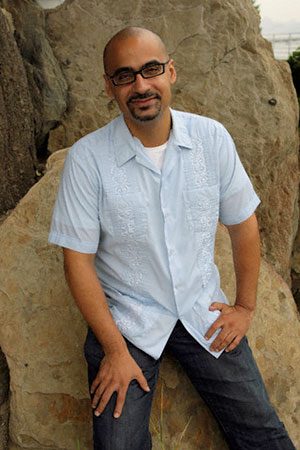
The geography of my childhood and adolescence and early adulthood was New Jersey, and I keep returning to it as an artist. It’s an endlessly fascinating place. When I think of how I came into personhood, how I became a thinking, feeling, active, civic entity, I think of bookstores in Montclair, theater in Red Bank and Monmouth County. I think of being on the beach at Seaside Heights and Sandy Hook, I think of family car trips down to Six Flags, I think of visiting Stokes State Forest. You can’t help but have the geography around you shape the geography within.
Most states can boast a robust diversity. But I don’t think most states can claim such a stupendous diversity in such a small area. People rarely think of New Jersey in terms of ethnic enclaves, but ethnic enclaves are part of the vibrancy of the state. And there’s a rich literary tradition and artistic tradition. People as disparate as Queen Latifah, Philip Roth, Bruce Springsteen, and many others are doing really interesting work and feel strongly that there’s something valuable in this compact, complicated geographical and cultural space we call New Jersey.
All this diversity passes itself on the Turnpike and the Parkway, but it comes together at specific places. Rutgers is one of them. I discovered all areas of interest there and a range of subject matter I had never encountered before. For immigrant kids, or kids who come from communities where the life of the mind is not necessarily encouraged, Rutgers makes an astonishing introduction. Demarest Hall [in New Brunswick], a dormitory for students inclined to art, writing, and other special interests was a great place for us, for kids who had ideas, who were artists, who were quirky. For a certain type of original kid, it was the place to be.
While I was at Rutgers College I worked at Raritan River Steel in Perth Amboy. And I delivered pool tables.
One of the things about that kind of experience is that you realize that not everyone is a 19-year-old privileged kid who can take a lot of time to hang out and drink. I met a lot of people who loved New Jersey not because it’s where they happened to be but because they put a lot into the experience and worked hard. They believed in their neighborhood, they were engaged at a civic level. For me that’s where a lot of Jersey pride comes from.
New Jersey is a very peculiar place because we live in the shadow of the greatest city on earth. For some people, the proximity of New York is a crisis. For other people it’s a convenience, a cool place to jump in and out of. For still others it’s a rich source of insight and creativity. For [the twentieth center painter, sculptor, earthworks creator, and essayist] Robert Smithson, who grew up in Passaic and Clifton and was one of the most important American landscape artists, places that are not at the heart of the heart of the universe can be where you get the most interesting art and thinking. In some ways that’s an idea I cling to.
I’m from the Dominican Republic so I have a kind of double situation. Both my birthplace and my adopted home are often generalized, dismissed, distorted, and underappreciated. I am well versed in and happy to champion both—because I am a beneficiary of all the qualities and characteristics that make these two spaces beautiful and which made someone like me possible.
Junot Díaz is the author of the short story collection Drown and the novel The Brief Wondrous Life of Oscar Wao, which won the Pulitzer Prize for fiction in 2008. He was born in the Dominican Republic and grew up in Parlin, near Sayreville, Middlesex County. He is a professor of writing at MIT.
As told to Eric Levin.



